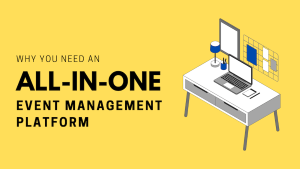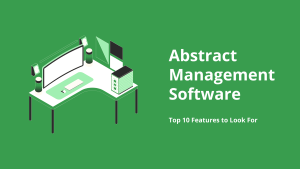
In only a few years, event management automation has managed to work its way up to become one of the most rewarding solutions for professional event organizers. And it only keeps getting better. According to Market.us, the number of planners adopting automated systems has increased multifold in the last two years.
What does event management automation offer for the thousands of organizers struggling with manual processes each year?
Manual processes mean late nights, constant emails and inevitable human errors that damage your professional reputation. A mistake the size of a cursor is enough to set off a domino effect and the entire event tumbles. This is where event management automation steps in. The technology exists to eliminate repetitive tasks and let you focus on creating memorable experiences instead of drowning in administrative work. In this blog, we’ll run you through an exhaustive list of 17 practical tips on using event management automation that will support your next big conference.
1. Start Event Management Automation with Registration Workflows
Registration forms are your first touchpoint with attendees. Automated registration systems capture attendee information, process payments and send confirmation emails without your involvement. Set up conditional logic so different attendee types see relevant questions only.
The real value comes from integration. When registration data flows automatically into your database, you eliminate manual data entry and the errors that come with it. Attendees get instant confirmations and you get clean data from day one. This flexible system lets you curate registration experiences that match your event’s specific needs.
2. Use Event Management Automation for Email Sequences
Stop sending individual emails to hundreds of attendees. Automated email sequences handle everything from initial registration confirmations to pre-event reminders to post-event follow-ups. Set up triggers based on attendee actions so relevant emails are sent at the right moments.
Someone registers and the confirmation email goes out immediately. If your event is just around the corner, reminder emails with logistics details are sent to registered attendees as you sleep. In case a speaker at your event cancels at the last minute, update emails reach affected attendees within minutes. This saves you and your team hours of manual communication work and days of stress.
3. Implement Smart Badge Printing Through Event Management Automation
On-site registration chaos often stems from manual badge creation. Automated badge printing pulls attendee information directly from your registration database and prints formatted badges on demand. QR codes embedded in badges enable quick check-ins and session tracking.
Some systems let attendees print their own badges at kiosks using confirmation codes. This eliminates registration desk bottlenecks. Your staff focuses on greeting attendees instead of fumbling with printers and label sheets. The efficiency gains are immediate and visible.
4. Schedule Social Media Posts with Event Management Automation Tools
Promoting your event requires a consistent social media presence across weeks or months. Manual posting is tedious and easy to forget. Automation tools let you schedule promotional posts across multiple platforms in advance.
Create your content calendar once and let the system handle posting. Different messages go out at optimal times for each platform. You maintain promotional momentum without logging into social media accounts daily. Track engagement metrics automatically to see which messages resonate with your audience.
5. Deploy Chatbots for Event Management Automation of Attendee Queries
Attendees often ask some of the same questions repeatedly.
Where’s the venue?
What’s the WiFi password?
When does registration open?
When using event management automation, chatbots handle these common queries instantly without a human ever having to intervene. Modern chatbots understand natural language and provide accurate responses around the clock. They handle hundreds of simultaneous conversations that would overwhelm your support team.
For more sophisticated issues demanding human attention, the chatbots will automatically escalate to staff members with full conversation context. This is valuable support for perplexed attendees who need quick answers.
6. Automate Session Check-ins with Event Management Automation Technology
Tracking session attendance manually with sign-in sheets is slow and produces unreliable data. Automated check-in systems use badge scanning or mobile apps to record attendance instantly. Attendees tap their badges at session entrances and data flows into your analytics dashboard in real time.
This information helps you understand which sessions attract audiences and which fall flat. You’ll know immediately if a room is over capacity and needs a venue change.
7. Set Up Event Management Automation for Speaker Management
Coordinating speakers involves collecting bios, presentations, travel details and technical requirements. Automated speaker portals let presenters submit everything through one interface. Reminders go out automatically for missing information or approaching deadlines.
The system tracks submission status so you know instantly who hasn’t uploaded their presentation three days before the event. Automated emails remind speakers of their session times and room assignments. This eliminates the endless back-and-forth emails that consume days of planning time. Universities and academic conferences particularly benefit from this streamlined approach.
8. Use Event Management Automation for Dynamic Agenda Updates
Event schedules change. Speakers cancel, sessions move and timing shifts. Automated agenda systems push updates to attendees instantly through mobile apps and email notifications. Attendees see current information whenever they check the schedule.
No more printed programs that become obsolete within hours. Changes made in your backend system appear immediately across all platforms. Attendees trust that the information they’re seeing is accurate because it always is. This flexibility matters when last-minute adjustments are unavoidable.
9. Implement Automated Invoicing Through Event Management Automation
Processing sponsorship payments and vendor invoices manually creates accounting headaches. Automated invoicing generates professional invoices based on sponsorship packages or vendor agreements. Payment reminders go out automatically before due dates.
When payments arrive, the system records them and updates the account status. You get a clear financial picture without manually tracking spreadsheets. Tax documents are generated automatically at year-end. Your accountant will thank you for this organized approach.
10. Deploy Survey Distribution via Event Management Automation
Post-event feedback matters, but collecting it is tedious. Automated survey systems send feedback requests immediately after events end, when experiences are fresh in attendees’ minds. Follow-up reminders go to non-respondents after a few days.
Responses flow into analytics dashboards showing satisfaction scores and common themes. You identify problems quickly and implement improvements for future events. The entire feedback loop runs without manual intervention. This is a good way to continuously improve your event quality.
11. Automate Certificate Generation with Event Management Automation
Many events require attendance certificates or continuing education credits. Generating these manually for hundreds of attendees wastes hours. Automated systems create personalized certificates using verified attendance data.
Attendees download certificates directly from their accounts or receive them via automated email. Credits appear in professional databases automatically for licensed professionals. The entire process happens without your involvement after initial setup. Universities offering professional development courses find this particularly valuable.
12. Use Event Management Automation for Waitlist Management
Popular sessions fill up fast. Manual waitlist management means constantly checking capacity and sending notifications. Automated waitlist systems move attendees from waiting on the lists to confirm when spots open up. Notifications go out instantly so attendees can act quickly.
The system handles the entire process fairly based on waitlist position. You avoid angry emails from attendees who missed their chance because you were too slow to notify them. The framework handles capacity management better than any manual process could.
13. Set Up Automated Reporting Through Event Management Automation
Your stakeholders want metrics and not words. They want answers to questions like:
How many are registered?
What’s the revenue?
Which sessions were popular?
Automated reporting generates these analytical and data-based inputs for you in an instant with zero effort at manual data compilation. Schedule reports to send daily during registration periods or weekly during planning phases.
Customizable dashboards will show you key performance indicators at a glance. You make data-driven decisions quickly instead of waiting days for someone to compile spreadsheets. Executive summaries are generated automatically for board presentations and the overall picture of your event’s success becomes immediately clear.
14. Implement Smart Room Assignment via Event Management Automation
Matching sessions to appropriate rooms involves considering capacity, technical requirements and schedule conflicts. Automated systems suggest optimal room assignments based on expected attendance and resource availability. When attendance predictions change, the system flags potential capacity issues.
This prevents embarrassing situations where 300 people show up to a room holding 150. You optimize space usage across your entire venue without complex manual calculations. Smart choices in room assignment improve the attendee experience significantly.
15. Use Event Management Automation for Vendor Coordination
Events involve multiple vendors handling catering, audio-visual equipment, decorations and more. Automated vendor management systems send contracts, track deliverables and manage payment schedules. Vendors access portals to confirm details and upload required documents.
Automated reminders keep vendors delivering on time. You see the complete status of all vendor relationships in one dashboard instead of searching through email threads to find that one catering confirmation from two months ago. The variety of vendors required for large events makes this automation invaluable.
16. Deploy Automated Session Recording with Event Management Automation
Recording sessions for later distribution requires coordination with AV teams and speakers. Automated recording systems start and stop based on session schedules. Recordings upload to your content library automatically with correct session titles and speaker information.
Attendees access recordings through their accounts without manual distribution. You create lasting value from your event content without hours of file management and email distribution. Students and professionals both appreciate having session recordings available for review.
17. Set Up Post-Event Engagement Through Event Management Automation
Events end, but relationships shouldn’t. Automated post-event engagement sends thank-you emails, shares recorded sessions and promotes future events. Drip campaigns maintain connections with attendees over months following your event.
The system segments audiences based on their interests and engagement levels. Active participants receive different messages than passive attendees. You build community around your events without manually tracking who should receive which communications. This ongoing relationship helps you work out the trajectory of your event series over time.
Making Event Management Automation Work for You
If you are considering event management automation, this blog is a good place to start. The benefits include reduced manual work, fewer errors and more time for creative planning that makes your events stand out.
Start small with one or two automation workflows that address your biggest pain points. Master those before expanding to more sophisticated integrations. The educational framework of automated systems is often regarded as one of the best investments event planners can make. Beginning from basic registration, organizers enjoy the independence and flexibility to curate their automation strategy.
Getting automation to work right takes initial setup time. This is why working out a rough plan for your automation journey is an important step. The overall cost is determined by a variety of factors, including the size of your events and the complexity of your needs. Organizers must make smart choices when choosing their automation platform and implementation approach, among other things.
For international events and academic conferences, automated systems handle multiple languages, time zones and currency conversions seamlessly. The prospects are flourishing for organizers who adopt these tools early. In fact, regular working hours are mandated to decrease significantly once automation handles repetitive tasks. As a result, event planners consistently report higher job satisfaction and better work-life balance.
For more personal guidance on implementing event management automation for your organization, book a demo with Dryfta today. Visit our website to see how much easier event planning becomes when our automated technology does the heavy lifting.




